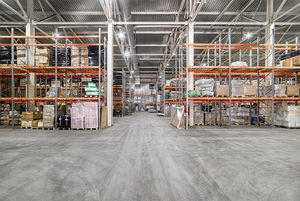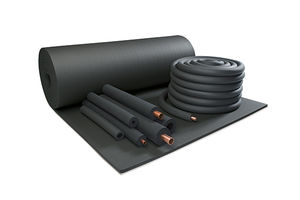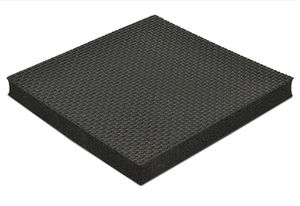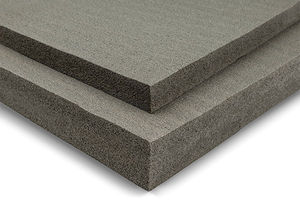 In a world of choice and endless options in building materials, analysis and comparisons are vital to make a correct product selection. Whether you are choosing a type of tile for a bathroom, cladding material for a skyscraper, or an insulation product for an HVAC or plumbing system, ensuring application and building codes requirements are met is crucial to an effective and compliant install. Variables like temperature, density, water permeability, or UV resistance can all impact a successful project selection.
In a world of choice and endless options in building materials, analysis and comparisons are vital to make a correct product selection. Whether you are choosing a type of tile for a bathroom, cladding material for a skyscraper, or an insulation product for an HVAC or plumbing system, ensuring application and building codes requirements are met is crucial to an effective and compliant install. Variables like temperature, density, water permeability, or UV resistance can all impact a successful project selection. In the mechanical insulation arena, Armacell’s portfolio has options for almost every application and need. Unlike other insulation manufacturers, Armacell produces two of the most common elastomeric insulation materials for HVAC, chilled water, and refrigeration systems based on nitrile butadiene rubber (NBR) and ethylene propylene diene monomer rubber (EPDM) technology. Both of these elastomeric foams are flexible, closed cell, and have a high resistance to moisture and water ingress. In fact, their water permeability is so low that they do not generally require additional water-vapor retarders. Also, with such high vapor resistance and surface emissivity, these elastomeric foams do an excellent job at preventing surface condensation formation.
In the mechanical insulation arena, Armacell’s portfolio has options for almost every application and need. Unlike other insulation manufacturers, Armacell produces two of the most common elastomeric insulation materials for HVAC, chilled water, and refrigeration systems based on nitrile butadiene rubber (NBR) and ethylene propylene diene monomer rubber (EPDM) technology. Both of these elastomeric foams are flexible, closed cell, and have a high resistance to moisture and water ingress. In fact, their water permeability is so low that they do not generally require additional water-vapor retarders. Also, with such high vapor resistance and surface emissivity, these elastomeric foams do an excellent job at preventing surface condensation formation.
Different Strengths, Different Applications
 Even though NBR and EPDM seem to be similar, there are some key differences. NBR is a non-aromatic polymer compound, whereas EPDM is an aromatic polymer. Moreover, NBR is made using acrylonitrile and butadiene monomers, while EPDM is made using ethylene, propylene and a diene comonomer. Another significant difference in terms of application, is that NBR has a temperature range of -40F to 180F, while EPDM has a wider operating temperature range of -65°F to 250°F)
Even though NBR and EPDM seem to be similar, there are some key differences. NBR is a non-aromatic polymer compound, whereas EPDM is an aromatic polymer. Moreover, NBR is made using acrylonitrile and butadiene monomers, while EPDM is made using ethylene, propylene and a diene comonomer. Another significant difference in terms of application, is that NBR has a temperature range of -40F to 180F, while EPDM has a wider operating temperature range of -65°F to 250°F)
NBR stands alone as the most oil- and fuel-resistant elastomer. It is also known for maintaining its stability in low temperatures. On the other hand, EPDM is a heat, ozone, and UV-resistant rubber that has a great tensile strength, aging resistance, and abrasion resistance, as well as having a lower smoke density with average flame development especially at 1-1/2 and 2” thicknesses. Both rubber cellular foam insulation products from Armacell are proven alternatives to fiberglass on HVAC, chilled water, and refrigerant systems (piping, pumps, tanks, vessels, and spheres) due to its hydrophobic chemical composition, closed-cell structure, and built-in vapor retarders. Armacell’s insulation solutions are manufactured with Microban® antimicrobial additive for protection against mold and mildew. They are also GREENGUARD Gold Certified for low VOC (volatile organic chemical) emissions making either choice, NBR or EPDM, a reliable and cost-effective option for a wide range of general-purpose applications.
Both rubber cellular foam insulation products from Armacell are proven alternatives to fiberglass on HVAC, chilled water, and refrigerant systems (piping, pumps, tanks, vessels, and spheres) due to its hydrophobic chemical composition, closed-cell structure, and built-in vapor retarders. Armacell’s insulation solutions are manufactured with Microban® antimicrobial additive for protection against mold and mildew. They are also GREENGUARD Gold Certified for low VOC (volatile organic chemical) emissions making either choice, NBR or EPDM, a reliable and cost-effective option for a wide range of general-purpose applications.
